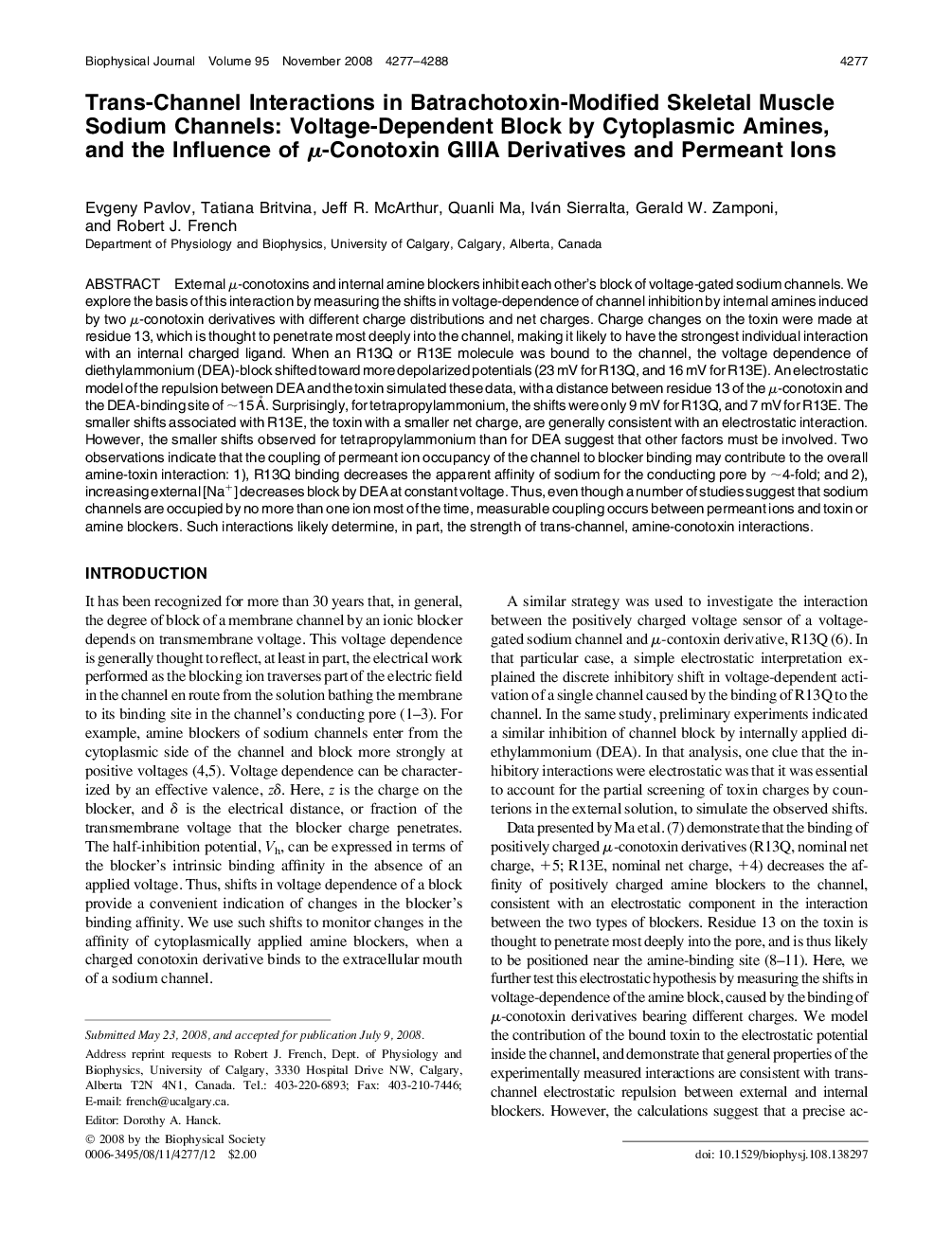| کد مقاله | کد نشریه | سال انتشار | مقاله انگلیسی | نسخه تمام متن |
|---|---|---|---|---|
| 1956481 | 1057858 | 2008 | 12 صفحه PDF | دانلود رایگان |

External μ-conotoxins and internal amine blockers inhibit each other's block of voltage-gated sodium channels. We explore the basis of this interaction by measuring the shifts in voltage-dependence of channel inhibition by internal amines induced by two μ-conotoxin derivatives with different charge distributions and net charges. Charge changes on the toxin were made at residue 13, which is thought to penetrate most deeply into the channel, making it likely to have the strongest individual interaction with an internal charged ligand. When an R13Q or R13E molecule was bound to the channel, the voltage dependence of diethylammonium (DEA)-block shifted toward more depolarized potentials (23 mV for R13Q, and 16 mV for R13E). An electrostatic model of the repulsion between DEA and the toxin simulated these data, with a distance between residue 13 of the μ-conotoxin and the DEA-binding site of ∼15 Å. Surprisingly, for tetrapropylammonium, the shifts were only 9 mV for R13Q, and 7 mV for R13E. The smaller shifts associated with R13E, the toxin with a smaller net charge, are generally consistent with an electrostatic interaction. However, the smaller shifts observed for tetrapropylammonium than for DEA suggest that other factors must be involved. Two observations indicate that the coupling of permeant ion occupancy of the channel to blocker binding may contribute to the overall amine-toxin interaction: 1), R13Q binding decreases the apparent affinity of sodium for the conducting pore by ∼4-fold; and 2), increasing external [Na+] decreases block by DEA at constant voltage. Thus, even though a number of studies suggest that sodium channels are occupied by no more than one ion most of the time, measurable coupling occurs between permeant ions and toxin or amine blockers. Such interactions likely determine, in part, the strength of trans-channel, amine-conotoxin interactions.
Journal: - Volume 95, Issue 9, 1 November 2008, Pages 4277–4288